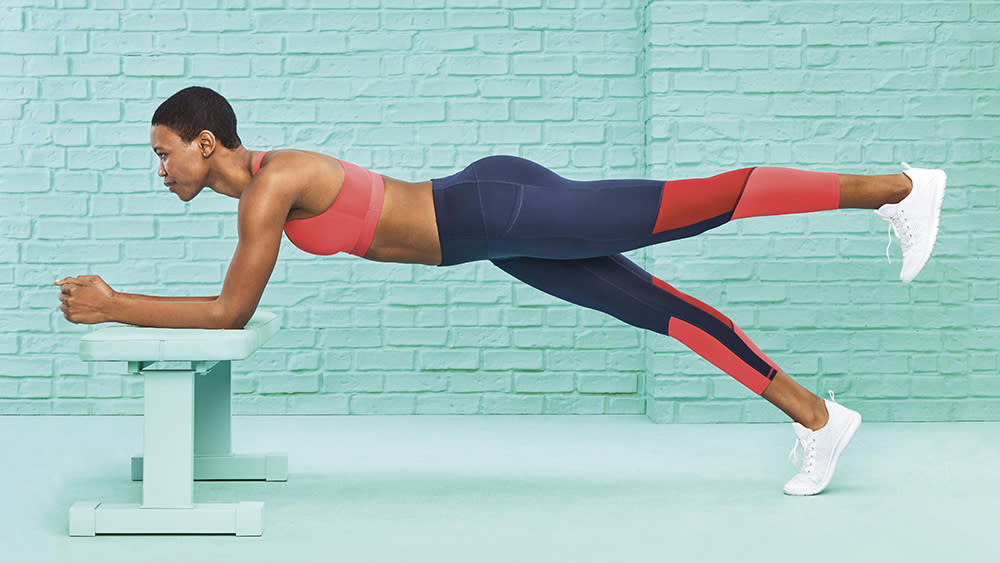One Year of Playing in Lockdown, the Activewear Market Continues to Grow

The activewear games continue.
The athletic apparel sector was already a hot topic pre-pandemic. But in the year since lockdown began — as consumers’ choice of leisure and entertainment choices became severely limited — the activewear market has become ripe with competition.
More from WWD
Seemingly everyone — from Target Corp. to American Eagle Outfitters Inc.’s Aerie to Madewell to Gwyneth Paltrow teaming up with designer Proenza Schouler for Goop’s athletic line — has gotten into the game. Some shortly before the pandemic, others during.
There’s also sportswear giants like Nike Inc., Adidas AG and Under Armour Inc., along with smaller activewear brands, such as Urban Outfitters Inc.’s FP Movement by Free People, Gap Inc.’s Athleta and Fabletics, all of whom have no shortage of fans. Even Rihanna is looking to compete.
But with so many players on the field, consumers are often overloaded with options. Some wonder if the market still has room to grow. Furthermore, will shoppers continue to prioritize physical fitness and outdoor activities, even after the pandemic is over and people start attending in-person events again?
“What’s interesting is to look at how people have been wearing activewear,” Kristen Classi-Zummo, director of market insights in apparel at market research firm The NPD Group, told WWD. “People used to buy activewear to work out in. Now they’re buying it to do everyday activities, to lounge around in or as their work-from-home attire.”
In fact, for the 12 months ending September 2020, only a quarter of total U.S. activewear apparel was purchased for the intended use of exercise, according to data from NPD’s Checkout survey.
“Post pandemic, I don’t see this going away,” Classi-Zummo said. “There will probably be a rise in going-out fashion once the pandemic is over. But, I don’t think they’re going to be willing to sacrifice comfort for fashion anymore.”
Madelyn Ulrich, design director of innerwear brand Yummie, agreed.
“The consumer will now consider her intimates and activewear purchases as items that need to be multifunctional as well as comfortable,” Ulrich said. Hence the brand’s decision to expand into activewear later this month. “Our consumers were already wearing our styles in an active and multiuse way. The more we listen to our consumer and respond to her needs, the more growth we should see.”
That goes for all retailers hoping to capitalize off the moment.
In 2020, when sales for the entire apparel market fell thanks to lockdowns and the sudden end to a need for new clothes, sales of activewear only fell 2 percent, according to data from NPD. Moreover, one dollar out of every $3 that was spent on apparel in 2020, was spent on activewear.
“When you compare that to non-activewear apparel, activewear really maintained throughout 2020,” Classi-Zummo said. “And it also was able to grow in market share.”
Case in point: the firm found that shoppers buying activewear were spending more on apparel overall, compared with those buying non-activewear apparel.
But even after the pandemic and days of social distancing and mandatory outdoor activities and work-from-home lifestyles are over, industry experts are still expecting the market to grow. Allied Market Research is anticipating the global activewear market will reach nearly $547 billion by 2024.
Just how brands position themselves for future growth then will determine the winners from the losers. And the most successful game plan might still call for comfort — even post-pandemic.
“In the people we surveyed, the number-one determining factor for making an apparel purchase was comfort. Price was number two,” Classi-Zummo said. “The buyers are recognizing that these pieces are an investment and they’re willing to spend more for product versatility and added benefits. Different brands are really eyeing this opportunity. They’re creating products that not just blur these category lines, but whip them out altogether. [As consumers] we can’t really tell the difference anymore in product categories. Apparel has really become more versatile.”
Sign up for WWD's Newsletter. For the latest news, follow us on Twitter, Facebook, and Instagram.

